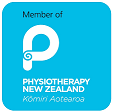
Running has been described as the world’s most accessible sport. It’s probably true. It’s free. It can be adjusted to anybody. Different speeds and distances are appropriate for different individual health and fitness levels. For new runners, like me, it takes time to get into shape. The key is consistency and a slow increase in speed and distance. And there are so many wonderful benefits.
These benefits can extend well beyond medications. Studies have shown that running can help prevent obesity, type 2 diabetes, heart disease, high blood pressure, stroke and even some cancers. Running also strengthens the joints in the body and can help with age-related bone problems i.e. osteoarthritis. Studies have shown that running can also vastly improve the quality of your emotional and mental life. It is frequently recommended as a therapy for people with clinical depression and people coping with addiction. A recent study has also linked running with improved memory and learning skills. The list of benefits is a long one!
The ACSM guidelines suggest that adults should get at least 150 minutes of moderate-intensity exercise per week. These can be moderate sessions five days per week or vigorous sessions three days per week. However, they also recommend a gradual progression of exercise time, frequency and intensity for the best adherence and least injury risk. However, that may not be possible for everybody, especially if someone is just starting out. So, it’s important to start small, even 5-10 minutes and then build up slowly, knowing that you will still get some benefits from any length of activity.
The down-side to any physical activity, including running, is that there is always a chance of injury. Running is high impact activity so injuries aren’t uncommon. However that is what we are here for! If you have a running injury of any kind or simply would like to build strength to improve your running, the skilled team at North City Physiotherapy can get you started today!
Joanne Sullivan is a physiotherapist working out of our Tawa clinic.
Want to see Jo?
Why not book online now at: https://northcityphysio.co.nz/booknow
Or call us on 0800 627497





 Maumahara Keelan is a physiotherapist working out of our Johnsonvile clinic.
Maumahara Keelan is a physiotherapist working out of our Johnsonvile clinic.
 Bridget Stewart is a physiotherapist working out of our Johnsonvile clinic.
Bridget Stewart is a physiotherapist working out of our Johnsonvile clinic.














